
|
商品品牌:教材
现代语言学 00830 【编组】:全国高等教育自学考试指导委员会 【主编】:何兆熊 梅德明 【出版社】:外语教学与研究出版社 【印张】:12 【字数】:246千字 【页数】:368 【定价】:15.9 【ISBN编号】:9787560015231 目录 Chapter 1 Introduction 1. What is linguistics? 1.1 Definition 1.2 The scope of linguistics 1.3 Some important distinctions in linguistics 1.3.1 Prescriptive vs. descriptive 1.3.2 Synchronic vs. diachronic 1.3.3 Speech and writing 1.3.4 Langue and parole 1.3.5 Competence and performance 2. What is language? 2.1 Definitions of language 2.2 Design features Study questions Chapter 2 Phonology 1. The phonic medium of language 2. Phonetics 2.1 What is phonetics? 2.2 Organs of speech 2.3 Orthographic representation of speech sounds—broad and narrow transcriptions 2.4 Classification of English speech sounds 2.4.1 Classification of English consonants 2.4.2 Classification of English vowels 3. Phonology 3.1 Phonology and phonetics 3.2 Phone, phoneme, and allophone 3.3 Phonemic contrast, complementary distribution, and minimal pair 3.4 Some rules in phonology 3.4.1 Sequential rules 3.4.2 Assimilation rules 3.4.3 Deletion rule 3.5 Suprasegmental features—stress, tone, intonation 3.5.1 Stress 3.5.2 Tone 3.5.3 Intonation Study questions Chapter 3 Morphology 1. Definition 2. Morpheme 2.1 Morpheme: the smallest meaningful unit of language 2.2 Types of morphemes 2.2.1 Free morphemes 2.2.2 Bound morphemes 2.2.3 Morphological rules 3. Compounding 3.1 Types of compound words 3.2 Features of compounds Study questions Chapter 4 Syntax 1.Syntax as a system of rules 2. Sentence structure 2.1 The basic components of a sentence 2.2 Types of sentences 2.2.1 The simple sentence 2.2.2 The coordinate sentence 2.2.3 The complex sentence 2.3 The linear and hierarchical structures of sentences 2.3.1 The linear word order of a sentence 2.3.2 The hierarchical structure of a sentence 2.3.3 Tree diagrams of sentence structure 3. Syntactic categories 3.1 Lexical categories 3.2 Phrasal categories 4. Grammatical relations 5. Combinational rules 5.1 Phrase structure rules 5.2 The recursiveness of phrase structure rules 5.3 X-bar theory 6. Syntactic movement and movement rules 6.1 NP- movement and WH- movement 6.2 Other types of movement 6.3 D-structure and S-structure 6.4 Move α—a general movement rule 7. Toward a theory of universal grammar 7.1 General principles of Universal Grammar 7.2 The parameters of Universal Grammar Study questions Chapter 5 Semantics 1. What is semantics? 2. Some views concerning the study of meaning 2.1 The naming theory 2.2 The conceptualist view 2.3 Contextualism 2.4 Behaviorism 3. Lexical meaning 3.1 Sense and reference 3.2 Major sense relations 3.2.1 Synonymy 3.2.2 Polysemy 3.2.3 Homonymy 3.2.4 Hyponymy 3.2.5 Antonymy 4. Sense relations between sentences 5. Analysis of meaning 5.1 Componential analysis—a way to analyze lexical meaning 5.2 Predication analysis—a way to analyze sentence meaning Study questions Chapter 6 Pragmatics 1. What is pragmatics? 1.1 Definition 1.2 Pragmatics vs. semantics 1.3 Context 1.4 Sentence meaning vs. utterance meaning 2. Speech act theory 3. Principle of conversation Study questions Chapter 7 Historical Linguistics 1. The purpose and significance of the historical study of language 2. The nature of language change 3. The historical development of English 3.1 Major periods in the history of English 3.1.1 Old English 3.1.2 Middle English 3.1.3 Modern English 3.2 linguistic change of English 3.2.1 Sound change 3.2.2 Morphological change 3.2.3 Syntactic change 3.2.4 Lexical change 3.2.5 Semantic change 4. Language family 4.1 Classifying genetically related languages 4.2 The Indo-English language family 5. The causes of language change 5.1 Sound assimilation 5.2 Rule simplification and regularization 5.3 Internal borrowing 5.4 Elaboration 5.5 Sociological triggers 5.6 Cultural transmission 5.7 Children’s approximation toward the adult grammar Study questions Chapter 8 Sociolinguistics 1. Language variation 1.1 Speech community 1.2 Speech variety 1.3 Regional variation 1.4 Social variation 1.5 Stylistic variation 1.6 Idiolectal variation 2. Standard and nonstandard language 2.1 Standard and nonstandard language 2.2 Lingua francas 2.3 Pidgins 2.4 Creoles 3. Diglossia and bilingualism 3.1 Diglossia 3.2 Bilingualism 4. Ethnic dialect 4.1 Black English, a case study of ethnic dialect 4.2 The social environment of Black English 5. Social dialect 5.1 Education varieties 5.2 Age varieties 5.3 Gender varieties 5.4 Register varieties 5.5 Address terms 5.6 Slang 5.7 Linguistic taboo 5.8 Euphemism Study questions Chapter 9 Psycholinguistics 1. The biological foundations of language 1.1 The case of Phineas Gage 1.2 The human brain 1.3 Brain lateralization 2. Linguistic lateralization 2.1 Left hemispheric dominance for language 2.2 Dichotic listening research 3. The language centers 3.1 Broca’s area 3.2 Wernicke’s area 3.3 The angular gyrus 3.4 Language perception, comprehension and production 4. The critical period for language acquisition 4.1 The critical period hypothesis 4.2 The case of Genie and the degeneration of language faculty with age 5. Language and thought 5.1 Early views on language and thought 5.2 The Sapir-Whorf hypothesis 5.3 Arguments against the Sapir-Whorf hypothesis 5.3.1 Words and meaning 5.3.2 Grammatical structure 5.3.3 Translation 5.3.4 Second language acquisition 5.3.5 Language and world views 5.4 Understanding the relation of language and thought 5.4.1 Major functions of language 5.4.2 The development and blending of language 5.4.3 Thinking without language 5.4.4 Language as a conventional coding system to express thought 5.4.5 The ways in which language affects thought Study questions Chapter 10 Language Acquisition 1. First language acquisition 1.1 The biological basis of language acquisition 1.2 Language acquisition as the acquisition of grammatical rules 1.3 The role of input and interaction 1.4 The role of instruction 1.5 The role of correction and reinforcement 1.6 The role of imitation 2. Stages of first language acquisition 2.1 The prelinguistic stage 2.2 The one-word stage 2.3 The two-word stage 2.4 The multiword stage 3. The development of the grammatical system 3.1 The development of phonology 3.2 The development of syntax 3.3 The development of morphology 3.4 The development of vocabulary and semantics 4. Second language acquisition 4.1 Acquisition vs. learning 4.2 Transfer and interference 4.3 Error Analysis and the natural route of SLA development 4.4 Interlanguage and fossilization 4.5 The role of input 4.6 The role of formal instruction 4.7 Individual learner factors 4.7.1 The optimum age for second language acquisition 4.7.2 Motivation 4.7.3 Acculturation 4.7.4 Personality Study questions Suggested Answers to Study Questions An English-Chinese Glossary 后记 【责任编辑:】 |
显示全部
收起

广州自考教材应该从哪里买? 2022-06-25 08:06:07

广州自考教材在哪里买? 2022-05-25 20:54:19

2022年广州自学考试开考课程使用教材版本 2022-02-21 16:20:07

广州自考教材在哪里买? 2021-12-09 16:34:05
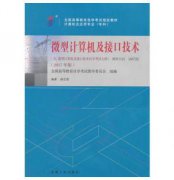
广州自考04732微型计算机及接口技术教材 2019-08-29 22:33:07
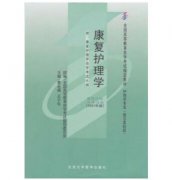
广州自考04436康复护理学教材 2019-08-29 22:33:07
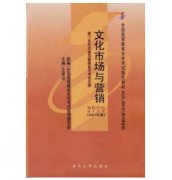
广州自考04127文化市场与营销教材 2019-08-29 22:33:07

广州自考04124文化经济学教材 2019-08-29 22:33:07
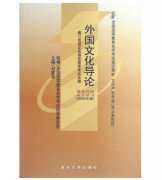
广州自考04123外国文化导论教材 2019-08-29 22:33:07
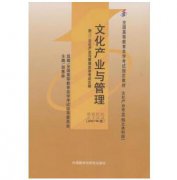
广州自考04122文化产业与管理教材 2019-08-29 22:33:07